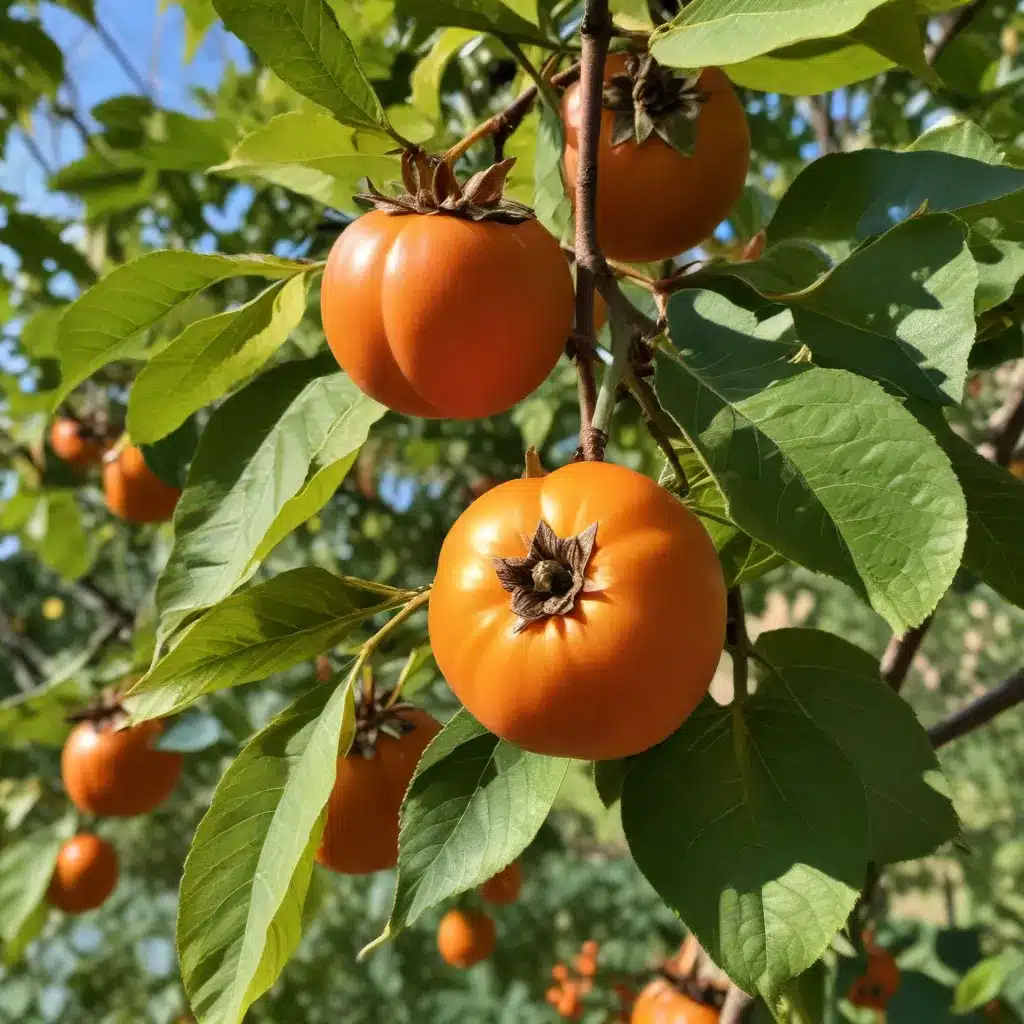
The American persimmon (Diospyros virginiana) is a captivating native fruit tree that has long enchanted foragers, gardeners, and culinary enthusiasts across its expansive range. This deciduous member of the ebony family thrives in the eastern and central United States, producing an abundance of sweet, custard-like fruits that have delighted generations. Revered for its remarkable flavor, nutritional prowess, and cultural significance, the American persimmon is a true gem deserving of greater recognition and appreciation.
Native Fruit Varieties
The American persimmon belongs to the genus Diospyros, which encompasses over 700 species worldwide. While the American persimmon is the primary native variety, several distinct regional cultivars have emerged, each with its own unique characteristics. The Meader and Yates varieties, for example, are renowned for their exceptionally large fruit and superior sweetness, often favored by home growers and small-scale orchardists.
Beyond the well-known American persimmon, other native species such as the Texas persimmon (Diospyros texana) and the Chaparro prieto (Diospyros palmeri) can be found in the southwestern United States, adding to the diversity of this fascinating genus. These lesser-known relatives share many of the same captivating qualities, presenting foragers and horticulturists with an array of intriguing options to explore.
Persimmon Cultivation
The American persimmon thrives in well-drained, acidic soils and full sun exposure, making it an ideal choice for home gardens and small orchards throughout its native range. These hardy trees can tolerate a variety of soil types and climatic conditions, from the humid coastal plains of the Southeast to the more continental climate of the Midwest.
Propagation is typically achieved through seed or grafting, with the latter method allowing for the preservation of desirable cultivars. Persimmon trees are dioecious, meaning they have separate male and female individuals, so planting both sexes is essential for reliable fruit production. Careful pruning and management are required to encourage optimal growth and yield.
Harvesting the ripe, golden-orange fruits is a delightful autumnal tradition, with peak ripening often coinciding with the vibrant foliage display. Persimmons are typically hand-picked or allowed to naturally fall to the ground, where they can be collected and enjoyed or processed for storage and culinary use.
Culinary Qualities
The American persimmon’s distinctive flavor profile is often described as a harmonious blend of honey, cinnamon, and tropical fruits, with a soft, custard-like texture when fully ripe. This unique combination of sweet, spicy, and creamy notes has made the persimmon a beloved ingredient in a wide range of culinary applications.
Persimmons can be enjoyed fresh, dried, or incorporated into baked goods, preserves, and even alcoholic beverages. Their natural sweetness lends itself well to desserts, while the firm, unripe fruit can be utilized in savory dishes, such as chutneys, salsas, and even as a replacement for tomatoes. The versatility of the persimmon allows chefs and home cooks to showcase its delightful flavors in both sweet and savory preparations.
Medicinal and Nutritional Benefits
Beyond their captivating culinary appeal, American persimmons are also prized for their impressive nutritional profile and traditional medicinal uses. These fruits are rich in vitamins A and C, as well as various B vitamins, minerals, and antioxidants. The high fiber content of persimmons also makes them a beneficial addition to a healthy diet.
In traditional medicine, persimmons have long been used to treat a variety of ailments, from digestive issues to skin conditions. The astringent properties of unripe persimmons have been employed to address diarrhea and other gastrointestinal problems, while the ripe fruit has been utilized to soothe sore throats and boost immune function.
Cultural Significance
The American persimmon has been an integral part of the cultural fabric of many Native American tribes, who have long revered the tree for its edible fruits, durable wood, and medicinal properties. The Osage, Choctaw, and Cherokee peoples, among others, have incorporated persimmons into their traditional diets, crafts, and healing practices.
In more recent history, the persimmon has maintained its importance in rural and small-town communities across the Eastern and Central United States. Persimmon festivals, preserving workshops, and community orchards have helped to preserve the legacy of this beloved fruit, ensuring that its unique flavors and traditions continue to be celebrated and passed down to future generations.
Ecological Considerations
The American persimmon plays a vital role in the natural ecosystems it inhabits, serving as a valuable food source for a wide range of wildlife, including birds, small mammals, and even black bears. The tree’s ability to thrive in a variety of soil and climate conditions has made it an essential component of riparian forests, bottomlands, and other transitional habitats.
However, as with many native species, the American persimmon faces threats from habitat loss, urbanization, and the introduction of invasive pests and diseases. Conservation efforts, such as the promotion of backyard and community orchards, as well as the protection of natural persimmon stands, are crucial to ensuring the long-term viability of this iconic tree.
By exploring the alluring world of the American persimmon, we can not only savor its delectable fruits and remarkable versatility but also deepen our connection to the natural landscapes and cultural traditions that have long revered this native treasure. Whether you are a gardener, forager, or simply someone who appreciates the beauty and bounty of the natural world, the American persimmon is a true delight worth discovering.
For more information on the care and cultivation of persimmons and other native fruit trees, visit TriCounty Tree Care.


